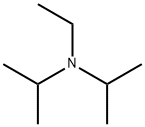Propantheline bromide
Synonym(s):(2-Hydroxyethyl)diisopropylmethylammonium bromide xanthene-9-carboxylate;Propantheline bromide
- CAS NO.:50-34-0
- Empirical Formula: C23H30BrNO3
- Molecular Weight: 448.39
- MDL number: MFCD00050291
- EINECS: 200-030-6
- SAFETY DATA SHEET (SDS)
- Update Date: 2025-01-27 09:38:02

What is Propantheline bromide ?
Chemical properties
white crystalline powder
The Uses of Propantheline bromide
Propantheline is an antimuscarinic agent used in the treatment of hyperhidrosis (excessive sweating), enuresis (involuntary urination) as well as cramps or spasms of the stomach, intestine and bladder.
The Uses of Propantheline bromide
anticholinergic
The Uses of Propantheline bromide
A muscarinic acetylcholine receptor antagonist
What are the applications of Application
Propantheline bromide is a muscarinic acetylcholine receptor antagonist
Definition
ChEBI: Propantheline bromide is a member of xanthenes.
brand name
Pro-Banthine (Searle).
General Description
White crystals or white powder. Melting point 159-161°C .Used therapeutically as an anticholinergic.
General Description
Propantheline bromide,2-hydroxy-ethyl)diisopropylmethylammonium bromidexanthene-9-carboxylate (Pro-Banthine), is prepared in amanner exactly analogous to that used for methanthelinebromide. It is a white, water-soluble, crystalline substance,with properties quite similar to those of methantheline bromide.Its chief difference from methantheline bromide is inits potency, which has been estimated variously to be 2 to5 times as great.
Air & Water Reactions
Water soluble.
Health Hazard
SYMPTOMS: Symptoms of exposure to Propantheline bromide include dilated pupils and blurred vision; increased intraocular tension and heart rate; hot, dry, red skin; dry mouth; disorientation; hallucinations; aggressive behavior; rapid pulse and respiration; convulsions; and coma.
Fire Hazard
Flash point data are not available for Propantheline bromide , but Propantheline bromide is probably combustible.
Biochem/physiol Actions
Inhibits action of acetylcholine at post-ganglionic synapses; muscarinic acetylcholine receptor antagonist; antispasmodic; reduces gastric acid secretion.
Veterinary Drugs and Treatments
In small animal medicine propantheline bromide has been used for its antispasmodic/antisecretory effects in the treatment of diarrhea. It is also employed in the treatment of hyperreflexic detrusor or urge incontinence and as oral treatment in anticholinergic responsive bradycardias. In horses, propantheline has been used intravenously to reduce colonic peristalsis and for relaxing the rectum to allow easier rectal examination and surgery.
Properties of Propantheline bromide
| Melting point: | 159-161°C |
| Density | 1.2916 (rough estimate) |
| refractive index | 1.6200 (estimate) |
| storage temp. | 2-8°C |
| solubility | H2O: soluble50mg/mL |
| form | powder |
| color | white to off-white |
| Water Solubility | >=10 g/100 mL at 21 ºC |
| Stability: | Stable. Combustible. Incompatible with strong oxidizing agents. |
| EPA Substance Registry System | Propantheline bromide (50-34-0) |
Safety information for Propantheline bromide
| Signal word | Warning |
| Pictogram(s) |
 Exclamation Mark Irritant GHS07 |
| GHS Hazard Statements |
H302:Acute toxicity,oral |
| Precautionary Statement Codes |
P264:Wash hands thoroughly after handling. P264:Wash skin thouroughly after handling. P270:Do not eat, drink or smoke when using this product. P301+P312:IF SWALLOWED: call a POISON CENTER or doctor/physician IF you feel unwell. P501:Dispose of contents/container to..… |
Computed Descriptors for Propantheline bromide
Propantheline bromide manufacturer
Aruvi Labs
Related products of tetrahydrofuran








You may like
-
 50-34-0 Propantheline bromide 98%View Details
50-34-0 Propantheline bromide 98%View Details
50-34-0 -
 50-34-0 99%View Details
50-34-0 99%View Details
50-34-0 -
 50-34-0 Propantheline bromide 99%View Details
50-34-0 Propantheline bromide 99%View Details
50-34-0 -
 Propantheline Bromide CAS 50-34-0View Details
Propantheline Bromide CAS 50-34-0View Details
50-34-0 -
 Propantheline bromide CAS 50-34-0View Details
Propantheline bromide CAS 50-34-0View Details
50-34-0 -
 Propantheline bromide CAS 50-34-0View Details
Propantheline bromide CAS 50-34-0View Details
50-34-0 -
 37951-47-6 3'-Benzyloxy propiophenone, 98% 99%View Details
37951-47-6 3'-Benzyloxy propiophenone, 98% 99%View Details
37951-47-6 -
 3'-Methoxypropiophenone, 99% 37951-49-8 99%View Details
3'-Methoxypropiophenone, 99% 37951-49-8 99%View Details
37951-49-8